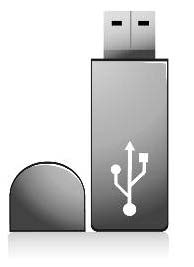Communication / Devices / Equipment / Other
-
List specific communication needs:
-
If (under stress after seizure), I may not make sense for a while. Leave me alone for 10-15 minutes, my mind should clear.
-
I speak slowly, softly and my speech is not clear. Find a quiet place for us to communicate. Be patient! Ask me to repeat or spell out what I am saying if you do not understand me!
-
I use a (word board, speech generating device, augmentative communication device, etc.) to communicate. In an emergency, I can point to words and letters.
-
I cannot read. I communicate using an augmentative communication device. I can point to simple pictures on a sheet which you will find in my wallet or __________.
-
I may have difficulty understanding what you are telling me, please speak slowly and use simple language.
-
My primary language is ASL (American Sign Language). I am deaf, not fluent in English, I will need an ASL interpreter. I read only very simple English. Try using gestures.
-
I am hard of hearing. Get my attention before speaking to me. Look at me when you speak so I can speechread.
-
I speak using an artificial larynx, if it is not available, I can write notes to communicate.
Equipment examples:
I use a:
-
Motorized wheelchair
-
Suction machine
-
Home dialysis
-
Respirator
-
Cochlear implant
-
Indwelling catheter
Other examples:
-
I need help with: walking, eating, standing, dressing, transferring, etc.
-
I need assistance with walking. The best way to assist is to allow me to hang onto your arm for balance.
-
I am blind, please tell me what you are doing before doing it. I read Braille and I need paper work read to me.
-
I have a panic condition. If I panic and appear very anxious, speak to me calmly and slowly. Be patient. Ask me if I need my medication and I will direct you. You may need to ask me more than once. Please stay with me until I calm down.
-
I use a respirator full time, but I can breathe without it for up to 15 minutes.
Review and update your emergency information when your medications or other information changes, but no less than twice a year.
Where:
Make many copies of this information to keep in your: emergency supply kits, car, work space, wallet (fold and place behind driver’s license or official identification card), wheelchair pack, etc.
Additional ways, but none of these should be your only way, to store your emergency health information include:
-
Keeping the information on your smart phone or hand-held device under ICE (in case of emergency).
-
You can also use ICE to list the phone numbers of those whom you would wish to be contacted in an emergency. For example, “ICE-1 John Smith” as a saved contact entry in your phone would alert emergency response personnel to contact Mr. Smith at the number listed. You can program as many numbers as you like using ICE-2, ICE-3, etc. so that your emergency contact person’s office and/or cell phone numbers are also listed.
-
-
Storing the information on a password protected thumb drive (called a flash drive or personal drive) on your key ring.
-
Keeping information online; for example, putting this information
-
in a folder in your email program
-
in one of the many available Internet services that allows you to store your health information.
-
Using these methods involves letting people you trust know where the information is and giving them any needed login name and password so they can access this information for you in an emergency.



User Comments/Questions
Add Comment/Question